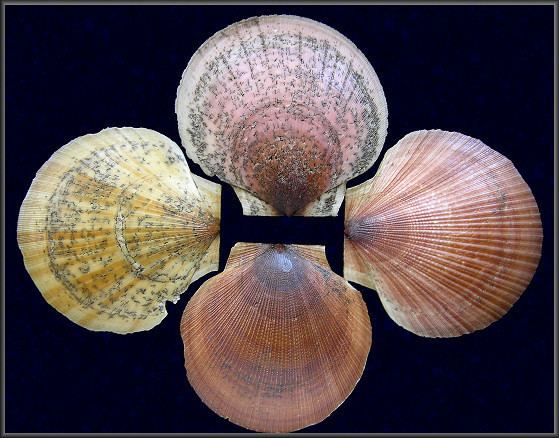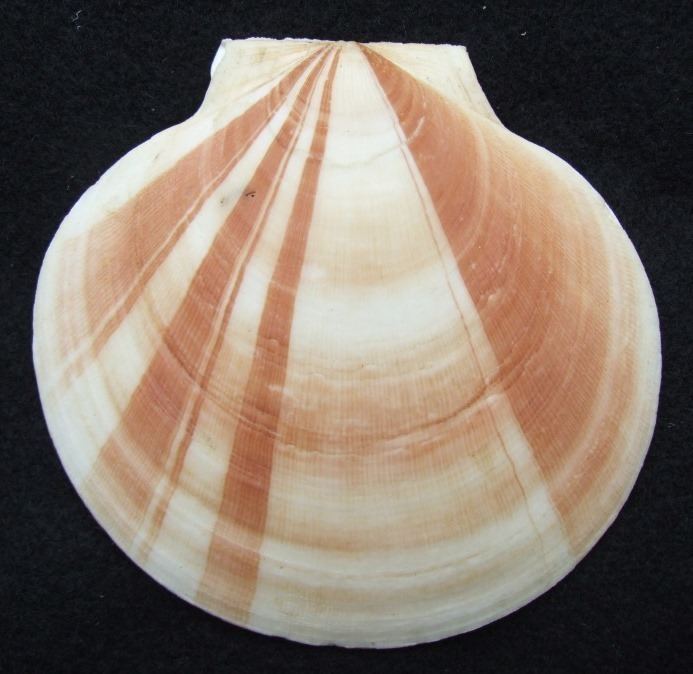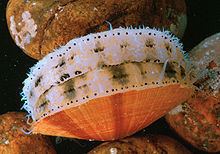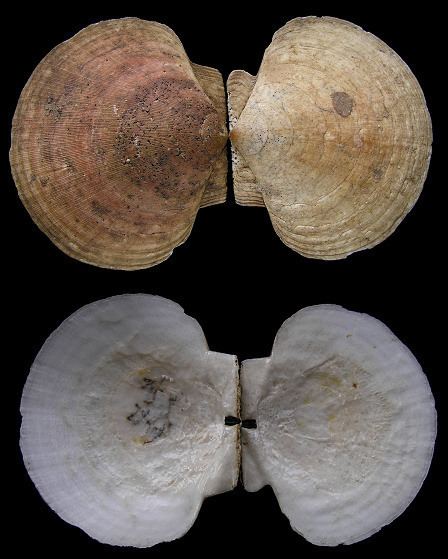Superfamily Pectinoidea Rank Species Order Ostreoida | Suborder Pectinina Family Pectinidae Scientific name Placopecten magellanicus Subclass Pteriomorphia | |
Similar Bay scallop, Argopecten, Pecten, Chlamys, Queen scallop | ||
Swimming baby giant sea scallops placopecten magellanicus
Placopecten magellanicus, the Atlantic deep-sea scallop (previously known as Pecten tenuicostatus and as Pecten grandis and once referred to as the "giant scallop") is a commercially important pectinid bivalve mollusk native to the northwest Atlantic Ocean.
Contents
- Swimming baby giant sea scallops placopecten magellanicus
- Description
- Range and habitat
- Sustainability of fishery
- References

Description
The shell has a classic form, with smooth shell and edges, unlike Pecten maximus (common name the "great scallop" or "king scallop") which has flutes and scalloped edges; size is around 80 mm, with individuals up to 170 mm in diameter. The shell is generally pinkish-red in color, with striped variegation to darker shades appearing in many individuals. The adductor muscle itself is large, often 30–40 mm in diameter. Like all scallops, P. magellanicus has photoreceptive eyes along the edge of the pinkish mantle.
Range and habitat

P. magellanicus is found on the continental shelf of the northwest Atlantic from the north shore of the Gulf of St. Lawrence south to Cape Hatteras, North Carolina.

Sea scallops typically occur at depths ranging from 18–110 m, but may also occur in waters as shallow as 2 m in estuaries and embayments along the Maine coast and in Canada. In southern areas, scallops are primarily found at depths between 45 and 75 m, and are less common in shallower water (25–45 m) due to high temperature. Although sea scallops are not common at depths greater than about 110 m, some populations have been found as deep as 384 m, and deep-water populations at 170–180 m have been reported in the Gulf of Maine. Sea scallops often occur in aggregations called beds. Beds may be sporadic (perhaps lasting for a few years) or essentially permanent (e.g., commercial beds supporting the Georges Bank fishery). The highest concentration of many permanent beds appears to correspond to areas of suitable temperatures, food availability, substrate, and where physical oceanographic features such as fronts and gyres may keep larval stages in the vicinity of the spawning population.

Adult sea scallops are generally found on firm sand, gravel, shells, and rock. Other invertebrates associated with scallop beds include sponges, hydroids, anemones, bryozoans, polychaetes, mussels, moon snails, whelks, amphipods, crabs, lobsters, sea stars, sea cucumbers, and tunicates.
Sustainability of fishery

According to NOAA, the Atlantic sea scallop fishery is healthy, and is harvested at sustainable levels. The sea scallop fishery is the largest wild scallop fishery in the world. In 2008, 53.5 million pounds of sea scallop meats worth $370 million were harvested in the United States. Massachusetts and New Jersey are responsible for the majority of the U.S. harvest. The Monterey Bay Aquarium Seafood Watch lists sea scallops as a "Good Alternative," its second best rating. . However, the Atlantic sea scallop is red listed by Greenpeace who state that scallop stocks are being overfished and that the fishing methods used are destroying corals and sponges. According to Greenpeace the fishery of scallops kills nearly 1,000 loggerhead sea turtles every year. However, in recent years, turtle dredge bars have been added to equipment. This has caused a significant reduction in sea turtles getting caught in harvesting gear.
